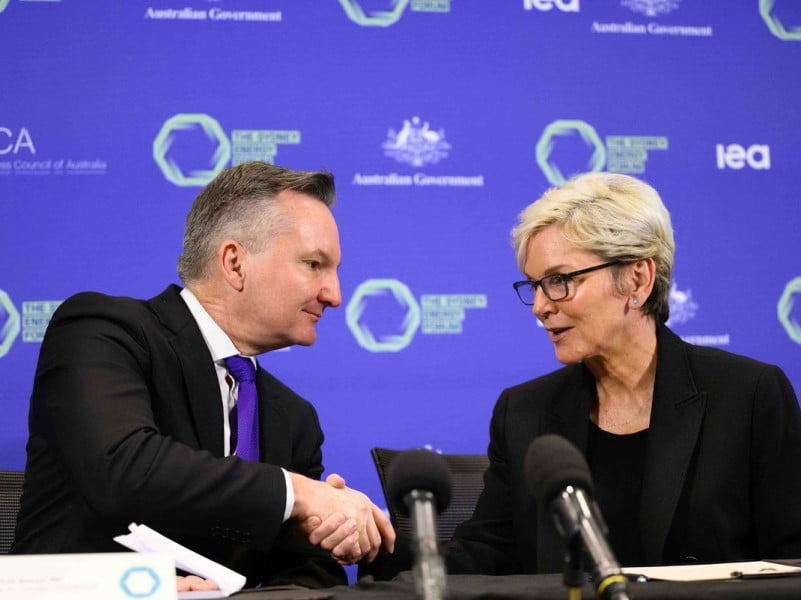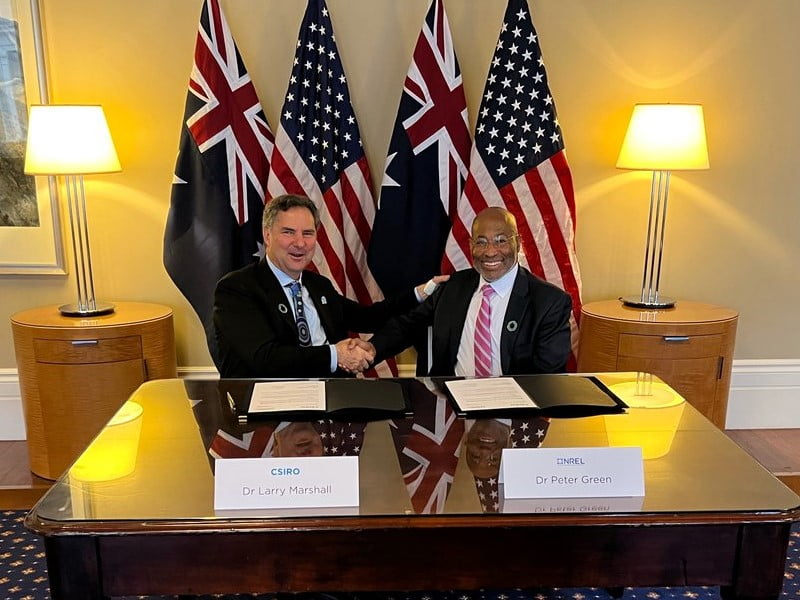At the Sydney Energy Forum on Tuesday, the Australian government two new partnerships with the United States and announced its participation in a global minerals security partnership.
Initial areas of cooperation under the Net Zero Technology Acceleration Partnership will focus on long duration energy storage technology, digital electricity grids, and the integration of variable renewable energy, hydrogen, and carbon dioxide removal, including direct air capture.
An accelerator/incubator program for small to medium-sized enterprises will be launched under the partnership.
The partnership is supported by a memorandum of understanding (MoU) between CSIRO and the US Department of Energy’s National Renewable Energy Laboratory (NREL) to facilitate research collaboration in areas related to renewable energy, electricity grids, hydrogen, and plastic waste.
A meeting between Australian and US officials to develop the Net Zero Technology Acceleration Partnership is to take place within three months. A spokesperson for the Department of Climate Change, Energy, the Environment and Water said that “work to progress further details of the partnership has begun immediately”.

The US-Australia Net Zero Technology Acceleration Partnership was signed by Climate Change and Energy minister Chris Bowen and the United States Secretary of Energy Jennifer Granholm.
Minister Bowen said that the partnership was important to reach the climate targets of both countries.
“This partnership is a huge milestone in ramping up the US and Australia’s shared commitment to ambitious climate action and energy security. It prioritises not just development but deployment of the critical technologies that will underpin economic opportunity in the energy transformation of our two countries,” Minister Bowen said.
Secretary Granholm said the collaboration was the key to reaching ambitious emissions reduction targets. She also highlighted the need for a methane strategy, to prevent leakages and improve detection.
“None of us can achieve our goals without working together. [Australia has] got incredible assets and the resources and technology that we want to learn from. And I know that we have some resources and technology that would benefit Australia as well and I can’t tell you how close we are about this partnership,” Secretary Granholm said.
At an earlier panel, CSIRO chief executive Dr Larry Marshall said that Australia should leverage its fantastic research sector and not be afraid to back local innovation.
“Our biggest problem is our innovation dilemma … because we don’t back our own innovations, generally they have to go overseas to be supported, Dr Marshall said.
“And we can’t make this massive transition, bigger than anything any of us have ever lived through if we don’t change that. But I believe we can do that and therefore we can invent many of those missing technologies those capabilities here in Australia,” he said.

NREL deputy laboratory director for science and technology and chief research officer Dr Peter Green said that the four focus areas under the MOU will be hydrogen, global power system transformation, plastics, and an accelerator/incubator program for small to medium-sized enterprises.
Dr Marshall said that the MOU builds on existing collaboration between the two organisations on solar, energy resilience, and plastics research. The organisations are also members of the Global Power System Transformation Alliance.
During the opening speech of the conference, Prime Minister Anthony Albanese cited figures from the International Energy Agency that stated around half of the technology to reach net zero already exists but the rest still needs to be developed.
There are 17 national laboratories under the United State Department of Energy that make up the country’s federal research system.
The United States’ 2030 emissions target is to reach a 50-52 per cent reduction compared to 2005 levels while the Australian target was recently revised to 43 per cent, up from the 28 per cent target set under the Coalition government.
The Australian federal government also announced today that it has joined the Minerals Security Partnership alongside the United States, Canada, Finland, France, Germany, Japan, the Republic of Korea, Sweden, the United Kingdom and the European Commission.
This was initially announced by the United States federal government last month during the Prospectors and Developers Association of Canada convention, which is the largest mining event in the world. The United States Department of State says the partnership will focus on ensuring partner countries are able to fully capitalise on their metal reserves.
The announcement followed a meeting between Minister King and Secretary Granholm to discuss the importance of critical minerals to the clean energy transition.
“My discussions with Secretary Granholm were extremely positive, and underlined how Australia and the United States can work together to further the development of critical minerals and to diversify global supply chains,” Minister King said.
“We agree that ongoing and secure supplies of critical minerals will be crucial to the modern renewable technologies that will ultimately help our two countries, and the world, achieve our net-zero ambitions.”
Australia holds huge reserves of minerals critical to the development of zero emissions technology. The country holds 22 per cent of the world’s nickel reserves and 20 per cent of the world’s cobalt reserves. Western Australia alone accounts for 50 per cent of the world’s output of lithium.
Last week, Foreign Minister Penny Wong announced that the ‘ambitious world’s-first’ Green Economy Partnership with Singapore would be finalised by the end of this year.
Do you know more? Contact James Riley via Email.

